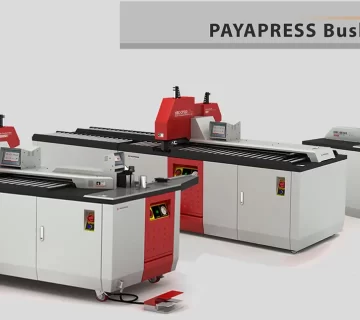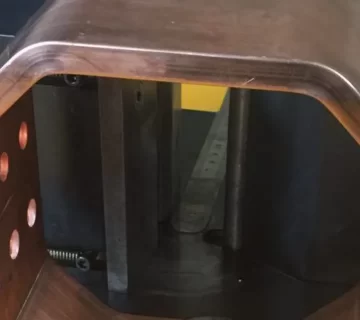In the specialized field of electrical engineering, particularly in the design and manufacturing of switchgear, the configuration of busbars plays a crucial role in determining the overall efficiency and longevity of the system. This article explores the comparative analysis of two different busbar designs: Busbar A, featuring a single 90-degree bend, and Busbar B, incorporating two 45-degree bends. The focus is on how these bending angles influence heat accumulation, operational lifespan, and maintenance costs of switchgears.
Heat Distribution and Efficiency
The geometry of a busbar significantly affects its ability to dissipate heat. When electrical current passes through a busbar, resistance at the bend points generates heat. In Busbar A, the single 90-degree bend creates a focal point for heat accumulation. This localized heating can lead to higher temperatures within the switchgear, which may not only affect the performance but also the safety of the system.
Conversely, Busbar B, with its two 45-degree bends, presents a different scenario. The split in bending angles allows for a more gradual directional change, which facilitates better heat distribution along the busbar. This configuration lessens the intensity of heat at any single point, thereby reducing the overall thermal stress within the switchgear.
Impact on Lifespan and Maintenance
The thermal management of busbars is directly linked to the longevity and reliability of switchgear. Excessive heat can accelerate the aging of insulation and other critical components, potentially leading to failures and the need for frequent replacements or repairs. Therefore, the cooler operation of Busbar B not only enhances the safety features of the switchgear but also extends its service life.
Moreover, the maintenance demands of switchgear are influenced by the design of its busbars. Busbar A, with higher heat at the bend, may require more robust cooling solutions and frequent inspections to prevent overheating issues. In contrast, the design of Busbar B inherently mitigates such risks, leading to lower maintenance costs and less downtime for repairs.
Technological Integration
The use of advanced busbar bending machines can significantly enhance the precision and effectiveness of these components. For instance, a hydraulic busbar bending machine allows for accurate bends, reducing stress and heat concentration points.
Conclusion
The design and configuration of busbars are pivotal in optimizing the performance of switchgear. This analysis highlights that Busbar B, with two 45-degree bends, is superior in managing heat distribution, thereby enhancing the operational efficiency, lifespan, and cost-effectiveness of the switchgear. These findings underscore the importance of considering busbar geometry in the design phase to build more reliable and efficient electrical systems.
Incorporating advanced busbar processing machines not only improves the performance but also contributes to the sustainability of electrical installations by reducing the need for frequent maintenance and component replacements.




No comment